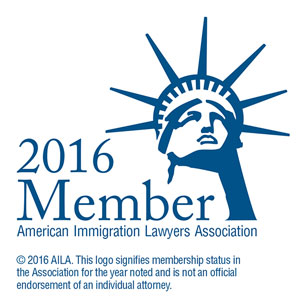USCIS’s Dystopian Implementation Plan to Allow Inheritance of Temporary Statuses from the Parents for the US Born Child Instead of Automatic Citizenship
The USCIS has issued an Implementation Plan to end birthright citizenship under Executive Order 14160, Protecting the Meaning and Value of American Citizenship. See 90 Fed. Reg. 8449 (2025) (E.O.).
The E.O. provides that the following categories of individuals will no longer be considered to be born “subject to the jurisdiction” of the United States and therefore will no longer be U.S. citizens at birth:
(1) children whose “mother was unlawfully present in the United States and the father was not a United States citizen or lawful permanent resident at the time of said person’s birth”; and
(2) children whose “mother’s presence in the United States at the time of said person’s birth was lawful but temporary (such as, but not limited to, visiting the United States under the auspices of the Visa Waiver Program or visiting on a student, work, or tourist visa) and the father was not a United States citizen or lawful permanent resident at the time of said person’s birth.”
The Implementation Plan considers the following categories as “lawful but temporary”, which the newborn child will inherit from one of the parents if they falls under one of these categories:
- Aliens granted withholding of removal under INA 241(b)(3) or withholding of deportation under former INA 243;
- Aliens granted withholding of removal or deferral of removal under the Convention Against Torture;
- Aliens granted voluntary departure, satisfactory departure, or a stay of removal;
- IMMACT 90 Family Unity beneficiaries;
- LIFE Act Family Unity beneficiaries;
- Nonimmigrants (unless listed separately below), including dual intent categories and T and U nonimmigrants;
- Citizens of the Federated States of Micronesia, the Republic of the Marshall Islands, and the Republic of Palau residing in the United States pursuant to Compacts of Free Association;
- Parolees;
- TPS beneficiaries to include applicants establishing prima facie eligibility;
- Visa Waiver Program entrants;
- Deferred action recipients; and
- Deferred Enforcement Departure recipients.
By contrast, aliens whose presence is lawful and not temporary include, and such a child will automatically be a citizen at birth:
- American Indians born in Canada who entered the U.S. under INA 289;
- Asylees;
- Conditional permanent residents;
- Lawful permanent residents;
- Refugees; and
- Individuals who are nationals but not also citizens of the United States.
The USCIS has hatched a sinister plan to implement Trump’s currently unconstitutional birthright citizenship executive order where the newborn child will not automatically be a US citizen but would inherit the lawful but temporary status of the mother in case the EO, which is currently blocked under Barbara v. Trump, is permitted to go into effect. If the mother is unlawfully present, and does not fall under any of the lawful but temporary categories, the child will also be considered unlawfully present as soon as it is born. The immigration authorities can technically remove the child who is unlawfully present.
And what if a child is born to a mother whose nonimmigrant visa status such as H-4 is pending, it would ridiculously result in the child being born into the world with a similarly pending status? And more ridiculous is if a child is born to a parent in F-1 status, which is considered lawfully present because of “Duration of Status” even if the parent has violated that status through unauthorized employment. The newborn child will be considered lawfully present but in violation of F-1 status and be technically subject to removal. Similarly a child born to a parent who has a pending asylum application will be considered unlawfully present, according to the Implementation Memo, and will also be subject to removal unless the parent is granted asylum.
According to a Times of India article on the Implementation Plan, where Cyrus Mehta is extensively quoted, if the child does not automatically become a citizen they will not be able to sponsor the parents when they turn 21 given the decades long backlogs in the employment based green card categories for persons born in India. If this child inherits the H-4 status from the parent who is in H-1B or H-4 status, the child will have to find its own way in the legal immigration system when they turn 21. Will this child also be charged to the parent’s country of birth, which is India, and will need to wait for decades before they become lawful permanent residents? The child’s age may not be protected under the Child Status Protection Act if the parent’s I-140 petition under the India EB-1 or EB-2 does not become current before the child turns 21.
The Implementation Plan will adopt what USCIS does with children of parents present in the United States on diplomatic visas who are not subject to the jurisdiction of the United States pursuant to 8 U.S.C. 1401(a) but are entitled to acquire lawful immigration status by registering. See 8 CFR 101.3. USCIS intends to broaden this practice to permit the children of noncitizens that possess lawful but temporary status to register to acquire any lawful status that at least one parent possesses. But the policy under 8 CFR 101.3 is more sensible as the child of the diplomat who is not subject to the jurisdiction of the US is entitled to lawful permanent residence. Under the Implementation Plan the child will inherit the temporary and unstable status of the parent such as withholding of removal. If the parent is not lawfully present, the child will also be born unlawfully present and will be subject to removal.
However dystopian this may be for a hapless newborn, parents need not panic because so far not a single federal court has sided with Trump’s EO and each court has found it unconstitutional. The USCIS will also have to change the regulations to allow inheritance of temporary statuses by registration, which will be long drawn and subject to challenge in the courts. The USCIS has also proposed to defer enforcement against such children until the regulations are promulgated. It is hoped that the majority of justices in the Supreme Court, if it gets there, will also find the EO blatantly unconstitutional and affirm birthright citizenship under the Fourteenth Amendment.




